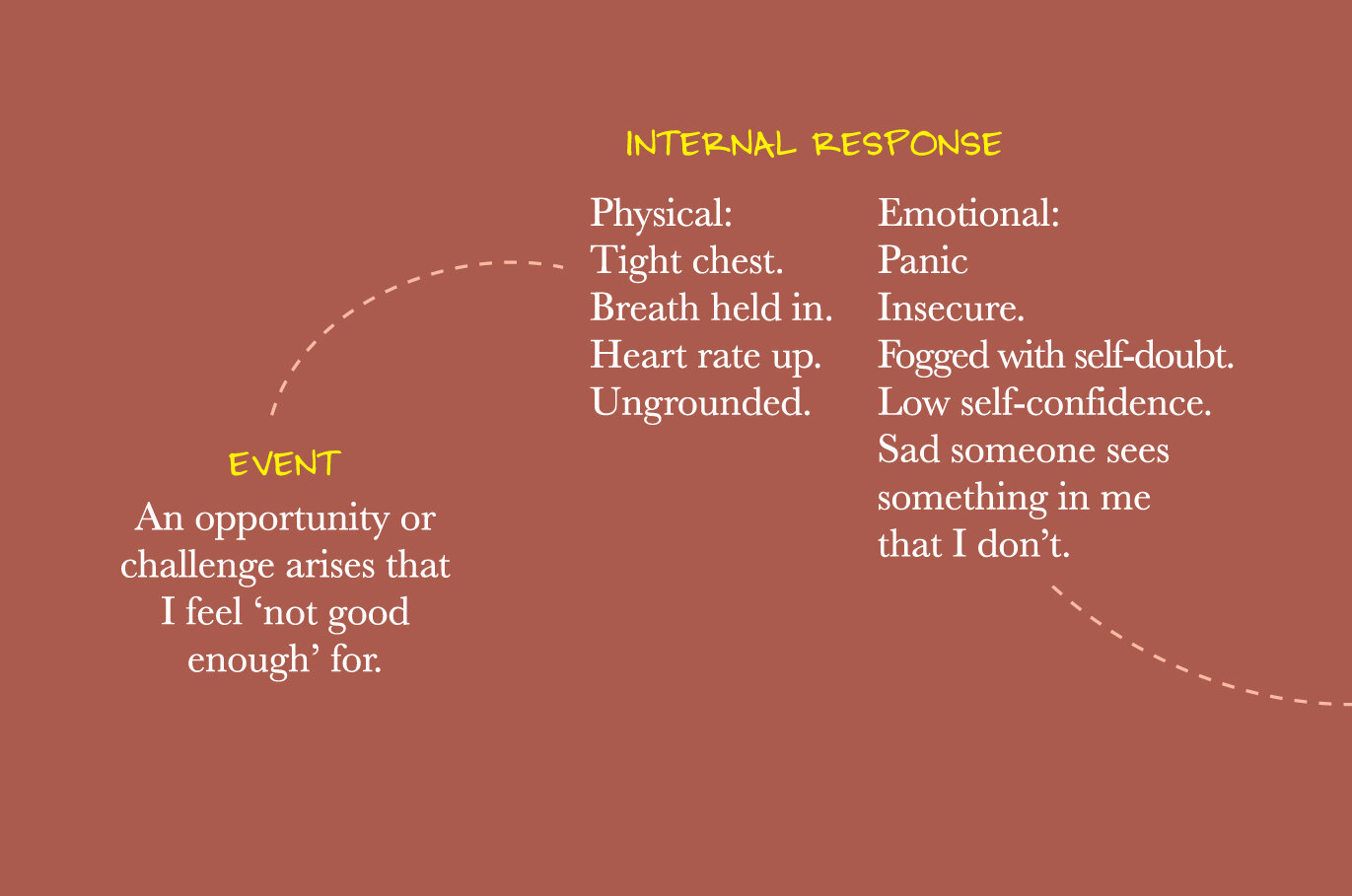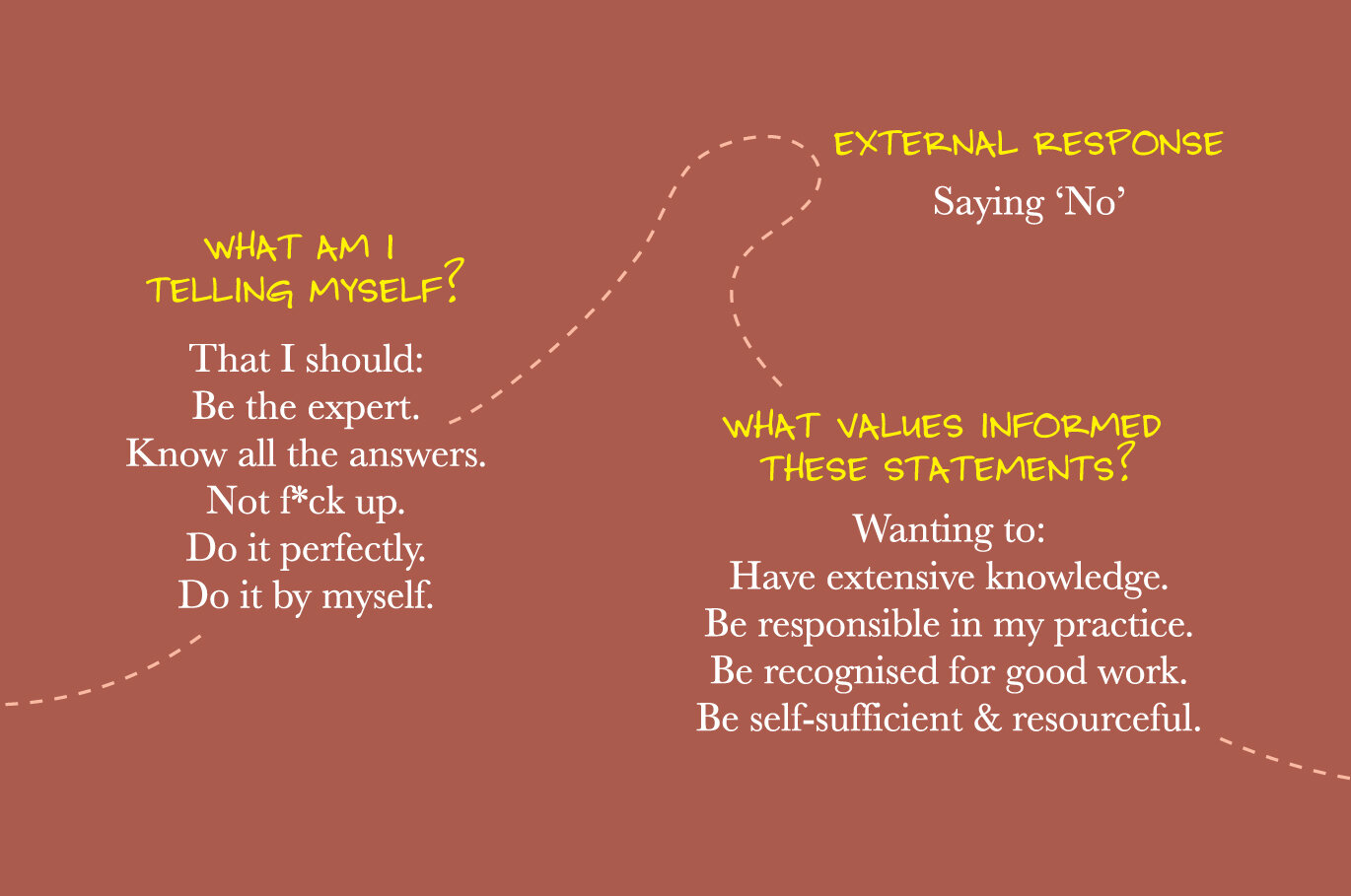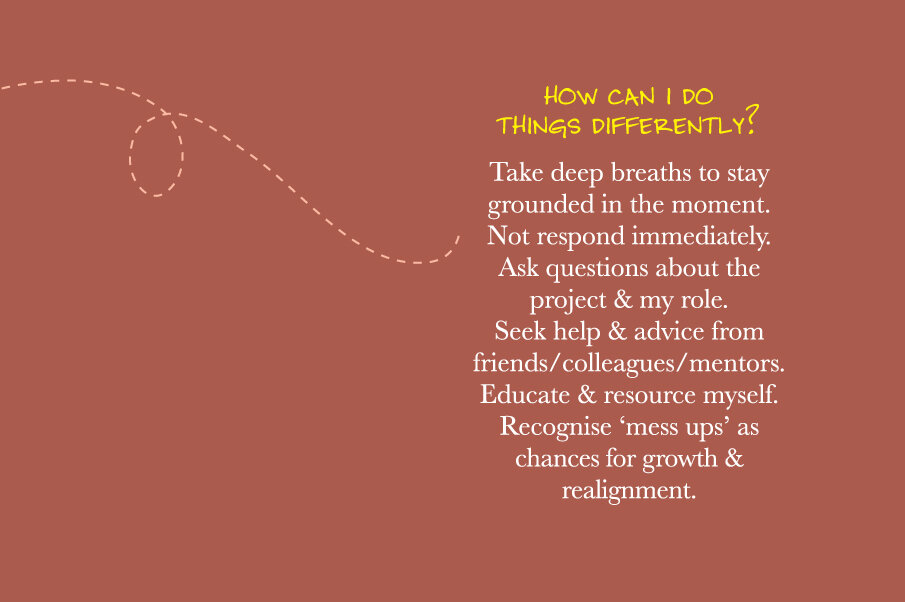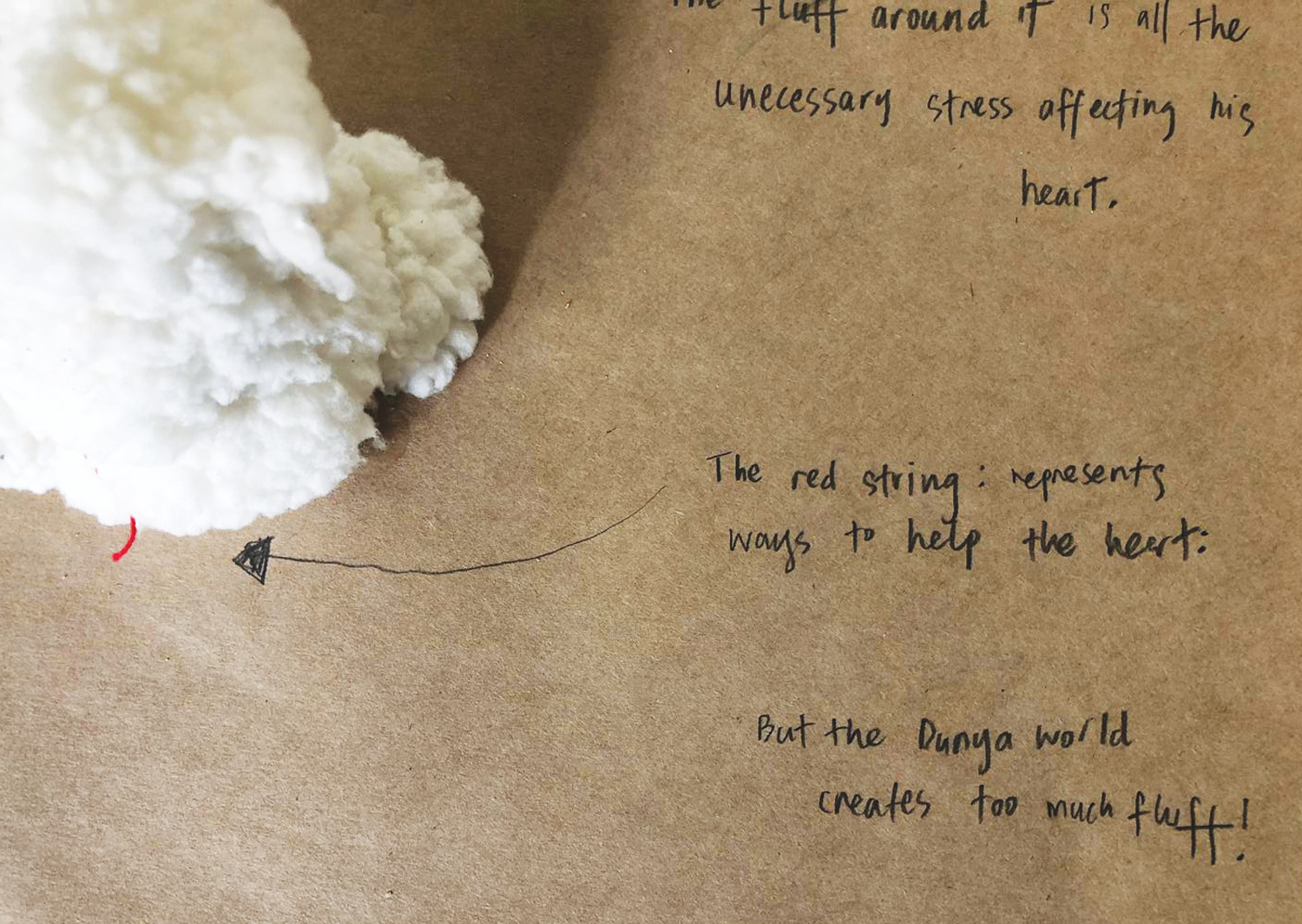Artmaking has been with me since I was a child. But it was while I was doing my visual arts degree in uni that I found art to be the place where I can articulate the unseen parts of who I was. Parts that I didn’t have language for.
I remember having a project where we needed to visually represent a song, and my choice was ‘What if God was one of us’ by Joan Osbourne. No one really knew it where I was growing up – which probably made it even more appealing for me – but it asked questions I was exploring.
And I remember my tutor at the time looking at my images, and just as I was about to explain them to him, he said ‘I know exactly what you’re trying to say here’. And that moment stuck with me because I was so clear about my experience, that he saw it too. It was undeniable and non-negotiable.
I realised art is where I meet myself. It’s where I meet all of my selves.
Through art-making I was able to honestly listen to what this moment demands of me. To listen deeply on a physical, emotional and spiritual level.
It’s this clarity that I chase in the art-making process.
Not everything I create and communicate will be beautiful, in the literal sense, because not everything I experience is beautiful. If anything, I find the art therapy process to be expansive in how it acknowledges our complexities, our nuances and how it holds space for those parts of us to breathe.
I love Coldplay’s lyric ‘I’d rather be a comma than a full stop’, because it acknowledges the transitions, to who I’m becoming in any given moment. Seeking clarity about who we are in any given moment has become an important intention of mine in the work I do with others.
The way I see it:
When you gain a clearer sense of self > you can state what you’re experiencing > you can state what you need > you can re-imagine what you need to create and live a fuller life.
Imagination is not inconsequential.
It shapes movements. It shapes wars. It shapes economies. It shapes how we meet in the digital world.
It’s the creative act of constructing a different way of being. We are now - as adrienne maree brown powerfully states - living in someone else’s imagination, in other people’s creative acts - constructive or destructive. Imagination requires hard work, an acknowledgment of what might be - and what might not be - possible. But I find it so important in working towards our wellbeing.
When we reimagine a self that is closer to who we want to be in the world, and reclaim what was once consumed by shame or guilt and that is one of the biggest leaps towards bringing healing into our spaces. I say space-S, because something I realised was that our healing isn’t just about ourselves.
People always ask me ‘Why do you focus so much on relationships?’
And my answer is: Our healing is connected to the healing of others.
My healing is connected to the healing of my parents and my grandparents. The healing of a marriage is connected to the healing of each partner. The healing of a community is connected to the healing of its leaders, it’s community workers and individuals.
When we imagine what healing, clarity and wholeness is possible for ourselves, we can imagine what healing, clarity and wholeness is possible in our partnerships, our families, our friendships, and communities. Our internal health is linked to the external. When we strengthen ourselves and our communities, we would be better equipped to tackle unhealthy existing structures and systems.
In my experience, art: the visual, the spoken, the written, the performed,
is a means to get these moments of clarity about what we might need for our healing,
to help us move towards reimagining the relationships we want with ourselves
and to reimagine our connections with others and with the collective systems we’re in.
That’s what I’m hoping to bring to the table…






